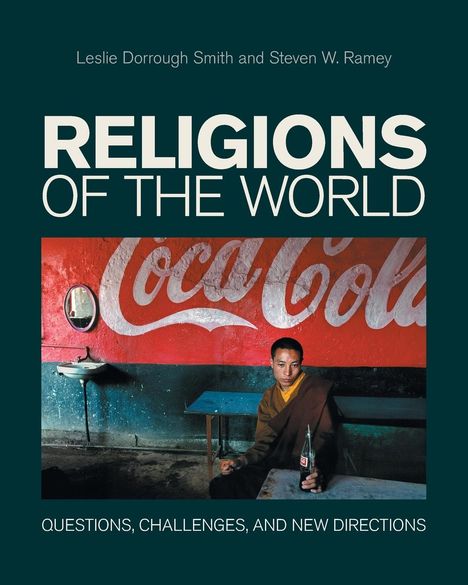Leslie Dorrough Smith: Religions of the World
Religions of the World
Buch
- Questions, Challenges, and New Directions
lieferbar innerhalb 2-3 Wochen
(soweit verfügbar beim Lieferanten)
(soweit verfügbar beim Lieferanten)
EUR 122,88*
Verlängerter Rückgabezeitraum bis 31. Januar 2025
Alle zur Rückgabe berechtigten Produkte, die zwischen dem 1. bis 31. Dezember 2024 gekauft wurden, können bis zum 31. Januar 2025 zurückgegeben werden.
- Equinox Publishing Ltd, 01/2024
- Einband: Kartoniert / Broschiert, Paperback
- Sprache: Englisch
- ISBN-13: 9781800503762
- Bestellnummer: 11430407
- Umfang: 484 Seiten
- Gewicht: 127 g
- Maße: 254 x 203 mm
- Stärke: 26 mm
- Erscheinungstermin: 2.1.2024
Achtung: Artikel ist nicht in deutscher Sprache!
Weitere Ausgaben von Religions of the World
Klappentext
Religions of the World provides a critical introduction to the social, political, and cultural interests that inform how people describe and identify with religion. It provides a sense of methodological transparency that few, if any, textbooks today offer.The introduction discusses contemporary methodological concerns in the study of religion, with special focus on the World Religions Paradigm. This is followed by ten chapters, six of which discuss a distinct religion and four of which discuss regional traditions. These scholarly categories (distinct tradition vs. regional tradition) shape the ways that both insiders and outsiders discuss, practice, and engage religion in their daily lives.
Each chapter introduces four different popular descriptions, or representations, of a particular religion or regional tradition. Each representation is followed by an analysis of what this representation accomplishes for those who promote it and what (or who) it also leaves out. Case studies provide real-world examples of the difficulties in thinking about religion in overly simplistic ways. The text does not attempt to diminish or reconcile contradictions between the different representations, so the reader does not leave with the idea that one representation is more correct or authentic than another, or that all four can be easily stitched together to make a tidy picture. Instead, students take away from each chapter a foundation of knowledge about the practices, issues, and conceptions associated with global religious traditions as well as the complexity behind any single representation.
Religions of the World makes transparent the human activity of constructing religion as well as the contemporary consequences of these representations, as people use them to legitimize identities and negotiate for social, legal, and economic resources. Throughout the book, students are challenged to interrogate who gets to decide on a particular portrayal of a religious tradition as well as the interests informing those decisions. The afterword discusses ways that the skills learned from this book can be applied beyond the study of religious discourses.


